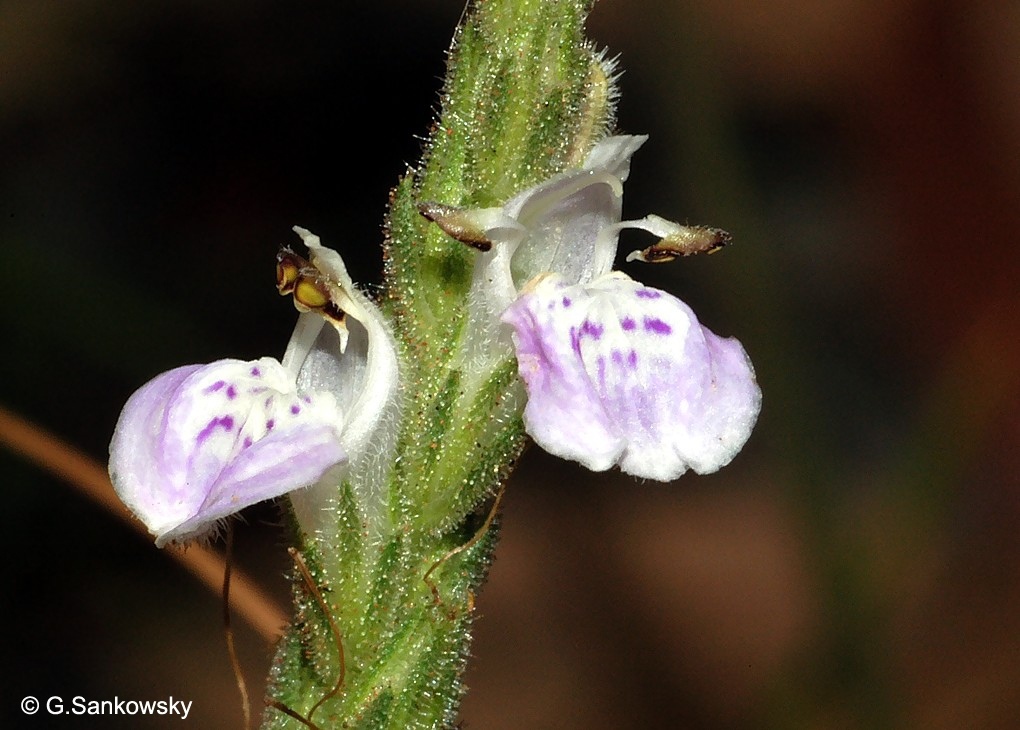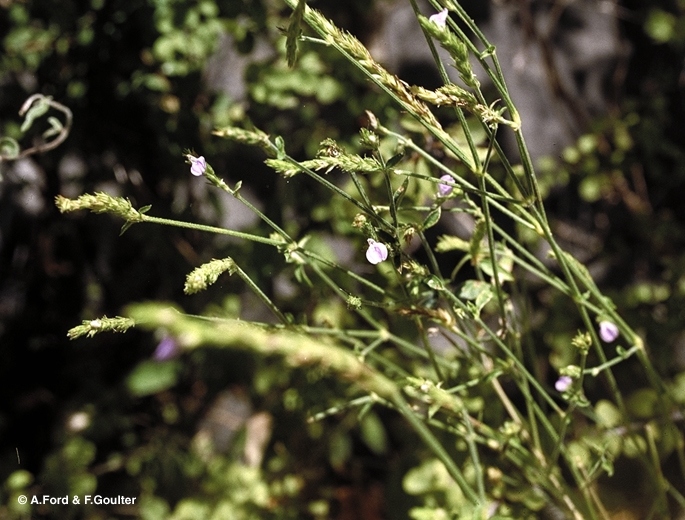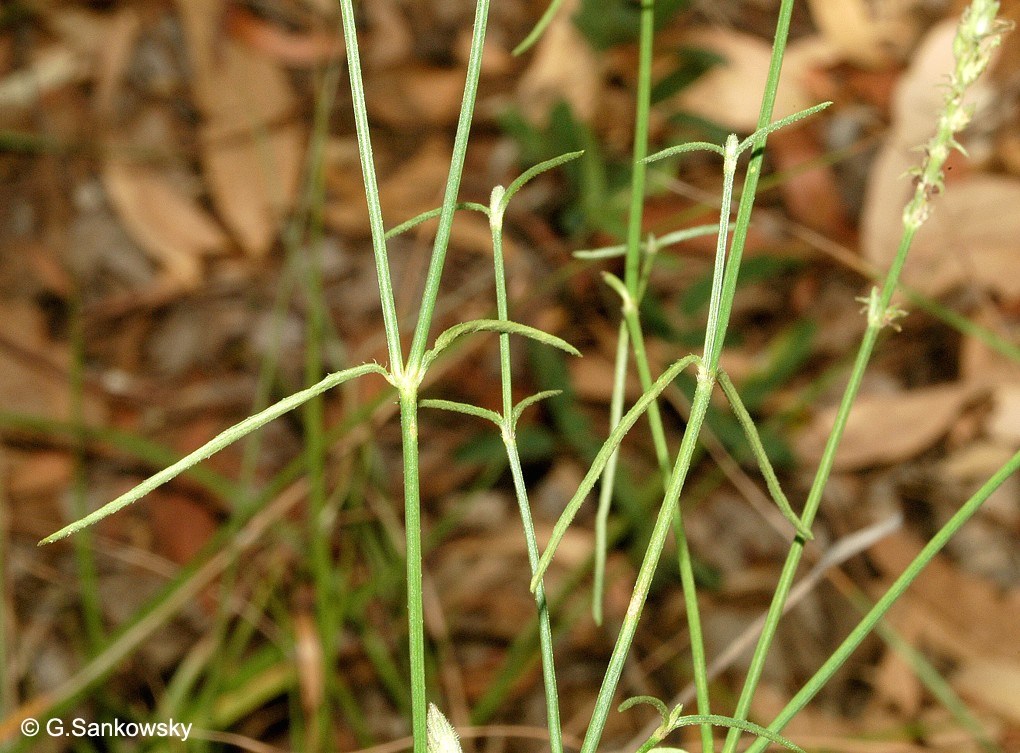Australian Tropical Rainforest Plants - Online edition
Rostellularia adscendens (R.Br.) R.M.Barker





Barker, R.M. (1986) Journal of the Adelaide Botanic Gardens 9: 250.
Pink Tongues
Occasionally grows into a small shrub but usually flowers and fruits as a herb.
Twigs longitudinally grooved and clothed in hairs. Leaves shortly petiolate, the petioles about 0.5-7 mm long. Leaf blades variable in size, about 0.6-2.7 x 0.2-1.5 cm.
Calyx 5-lobed (four large lobes and one small). Corolla about 4-7 mm long, +/- 2-lipped, the upper lip with one lobe and the lower lip with three small lobes at the apex, each with a thickened swelling. Anther sacs +/- separate from one another, +/- superposed and the lower anther sac tailed. Style sparsely hairy at least in the lower half. Stigma minutely 2-lobed. Ovary seated on a lobed cup-shaped disk.
Cotyledons about 4 x 3.5 mm, petioles about 1 mm long. First pair of leaves elliptic to ovate, about 8-9 x 4 mm, apex apiculate to acute, base cuneate or attenuate. Petioles about 1 mm long. At the tenth leaf stage: leaf blade with 3 or 4 lateral veins on each side of the midrib. Stems longitudinally ribbed or grooved and minutely hairy. Stipule-like scars or raised ridges present on the stems and connecting the petioles of opposing leaves in each pair. Seed germination time 155 days.
Endemic to Australia, occurs in WA, NT, CYP, NEQ, CEQ and southwards to coastal central New South Wales. Also occurs in southern Northern Territory, northern South Australia and the Pilbara region of Western Australia. Altitudinal range in northern Australia from 200-750 m. Grows in a variety of vegetation types but in CYP and NEQ is found in open forest, monsoon forest and vine thickets.
A widespread and very variable species with several named subspecies and varieties.
Food plant for the larval stages of the Blue Argus Butterfly. Sankowsky & Neilsen (2000).





